= = = TRIPOD METHOD = = =
Site by Jack Eisenmann
Method by Michael Gottlieb
= INTRO =
The Tripod method is an intermediate block based solution for the Rubik's cube. It requires less memorization of algorithms, and relies more on intuitive solving. The steps are listed below:
-
1.Make a 2 by 2 by 2 block.
-
2.Extend to 2 by 2 by 3.
3. Create a 2 by 2 by 1 block on one unsolved face.
4. Create another 2 by 2 by 1 block on the other unsolved face.
5. Solve a corner edge pair in the unsolved "tripod".
6. Solve the last layer, which contains only 5 scrambled pieces.
= STEPS 1 AND 2 =

Solve a "block" of pieces, like in the picture above. See Lars Petrus' site for how to do this.
= STEP 3 =

Create a 2 by 2 by 1 block on one of the unsolved faces. There are 8 possible blocks which you can make, so pick the one which is the easiest. It takes 3 sub-steps to make a block:
1. Make a corner edge pair. If there is any pre-matched corner edge pair, use it!
Shown below are several cases for corner-edge pairing:
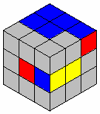
F'R'

F'R2

U'R'U
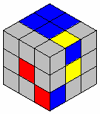
F R2F'

F'R'F R'F'
2. Find the other edge which will be part of the block. Place it on the appropriate face so that it is correctly oriented. Make sure not to ruin the corner edge pair in the process.
3. Match up the corner edge pair and centre edge pair. It doesn't matter if the block is rotated the wrong way for the next few steps.
= STEP 4 =
Create another 2 by 2 by 1 block on the other unsolved face. This block cannot share any of the pieces from the last block. The block is formed in the same way, except you have to be careful not to break up the last block which you made. For some difficult corner edge pairing cases, you may want to refer to the next step.
= STEP 5 =
Arrange the blocks so that there is a tripod of unsolved pieces:

Use the mini algorithm "Frifri" to solve a corner edge pair in the tripod. Frifri is simply R'F R F'. The cases shown below pair up the corner and edge in the tripod when Frifri is used. You may have to mirror Frifri.
Use Frifri:
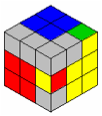
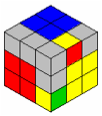
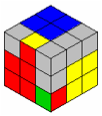
Use Frifri, then use one of the cases above:
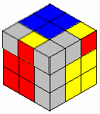
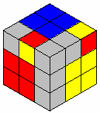
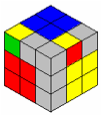
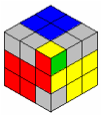
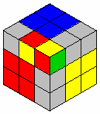
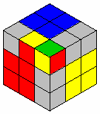
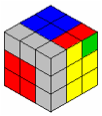
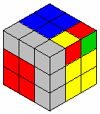
Use Frifri, then one of the cases above:
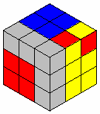
It is better to use pre-matched corner edge pairs, or corners and edges which can be matched with only 1 Frifri. Once you've paired a corner and an edge, place it in its appropriate place using Frifri.
= STEP 6 =

Solve the last layer, which only contains 3 unsolved corners and 2 unsolved edges. This is done by solving edges first, then corners. The algorithms needed are below.
Edges:
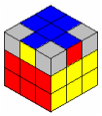
F'B'U2F U F'U2B U'F
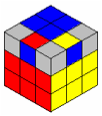
F U D R2U2R'U R U R2D'F'
Corners:
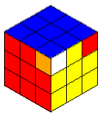
B2R2B'L'B R2B'L B'
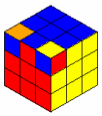
R B2R'U'B2U F U'B2U R B2R'F'
Remember to make use of conjugates; to solve the last layer faster, it's useful to temporarily move unsolved pieces together, use an algorithm, then fix the moved face.
= CREDIT =
Grant Bilker: First method
Lars Petrus: Second method
Jessica Fridrich: Inspiration for Fridrus method
Bernard Helmstetter: Algorithms
Ryan Heise: Concept of conjugates
